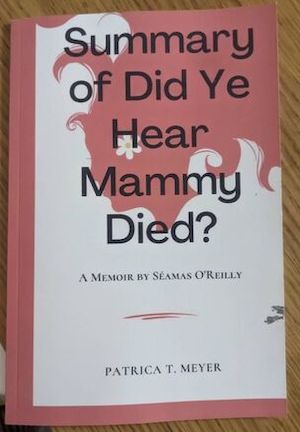 Low content book scams have a new lease on life, thanks to AIs like ChatGPT. Irish author Séamas O’Reilly is bemused by the appearance of a summary of his own memoir, slapped together by an AI.
Low content book scams have a new lease on life, thanks to AIs like ChatGPT. Irish author Séamas O’Reilly is bemused by the appearance of a summary of his own memoir, slapped together by an AI.
Patricia T. Meyer’s debut is a machine-made facsimile of my book. It is not a book so much as a crude, algorithmical trap, run through a synonymiser so it can bypass plagiarism-detection software, and con unsuspecting rubes into purchasing it by accident.
He continues:
I’ve been aware of these scam books for years, and had been tempted to write about what their existence says about writing, authorship and the deadening grind technology is making of every aspect of the creative arts, but never got around to the job.
History of low content book scams
The industry refers to such titles as “low content” books. Early versions were not written by authors or aspiring writers. They were produced by people seeking passive income, often employing overseas content farms and desperate plagiarists lifting images and text from various online sources.
Low content books started popping up about 10 years ago, thanks to Tim Ferriss’ 4-Hour Work Week and low barriers to entry on Amazon and other publishing-on-demand platforms. Low content book scams started at around the same time. YouTube accelerated the trend – Google “Amazon low content book passive income” and you will see what I mean.
One major POD provider, Ingram, banned such titles 3 years ago. Note the list includes summaries, journals, and AI-generated content:
- Summaries, workbooks, abbreviations, insights, or similar type content without permission from the original author. For example: A Summary of J K Rowling’s Harry Potter and the Chamber of Secrets.
- Books containing blank pages exceeding 10%, notepads, scratchpads, journals, or similar type content.
- Books or content that mirror/mimic popular titles, including without limiting, similar covers, cover design, title, author names, or similar type content.
- Books that are misleading or likely to cause confusion by the buyer, including without limiting, inaccurate descriptions and cover art. For example: A book with a cover design that does not match the interior content; a cover that appears to be for a product other than a physical book.
- Books listed at prices not reflective of the book’s market value. For example: a blank journal listed at $99.99.
- Books scanned from original versions where all or parts contain illegible content to the detriment of the buyer.
- Books created using artificial intelligence or automated processes.
While Ingram showed some integrity and respect for real authors when it implemented its policy, other platforms have no such qualms. As O’Reilly discovered, Amazon is still filled with low-content crap, and YouTube continues to pump low content book scams. Videos promoting low content book ideas (and other “passive income” fantasies) are often designed to get noobs to sign up for overpriced “masterclasses” which cost hundreds or thousands of dollars.
See also:
Video: No, you can’t make $4,500 per month in passive income with “low content” books on Amazon
